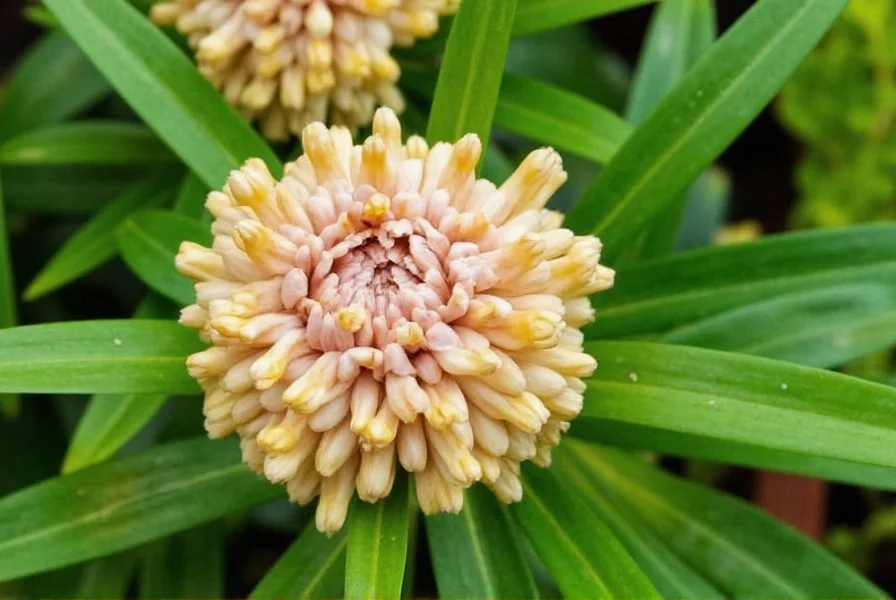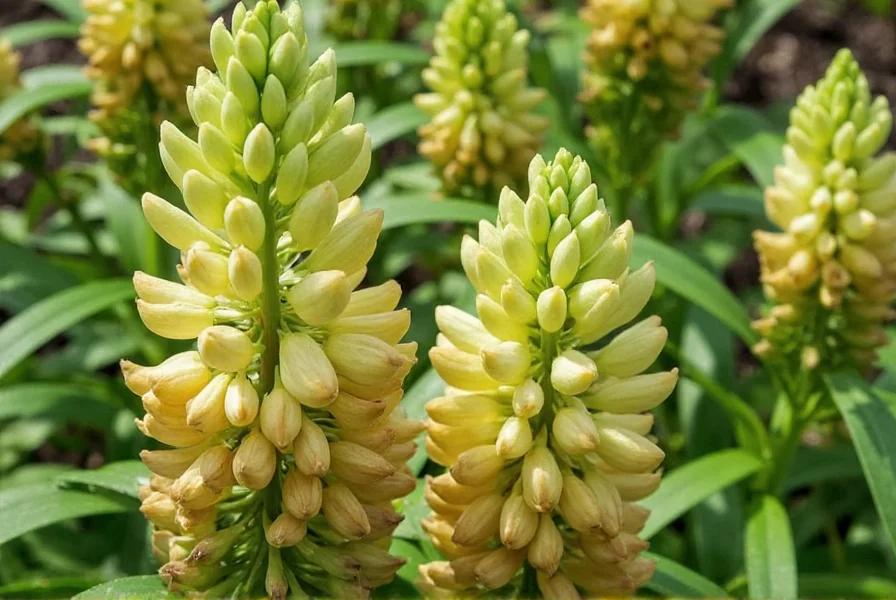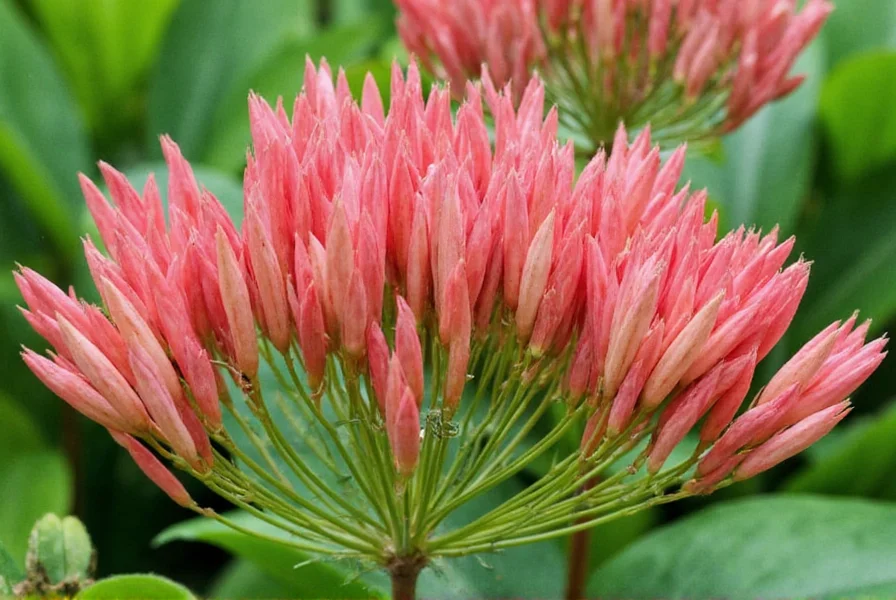Ginger's vibrant flowers often surprise gardeners who only know the plant for its underground rhizomes. These tropical perennials produce stunning blooms that emerge from cone-like structures called pseudostems, featuring delicate yellow, white, or pink petals with striking red or purple accents. Understanding how to encourage flowering requires knowledge of ginger's natural growth cycle and specific environmental needs.
Understanding Ginger's Flowering Nature
Many home gardeners mistakenly believe ginger doesn't flower because commercial cultivation focuses on rhizome production. In reality, ginger is a flowering plant native to Southeast Asia that evolved to reproduce through both rhizomes and seeds from its flowers. When grown in ideal conditions that mimic its natural habitat—warm temperatures, high humidity, and dappled sunlight—ginger readily produces its characteristic blooms.
Flowering typically begins when ginger plants reach maturity at 2-3 years old. Younger plants prioritize rhizome development, while established plants divert energy to flower production. The flowering season generally runs from late summer through early fall, with blooms lasting several weeks when conditions remain favorable.
Essential Conditions for Ginger Flowering
Successfully growing ginger flowers requires attention to specific environmental factors that differ slightly from standard rhizome cultivation. Here's what your ginger needs to produce blooms:
| Condition | For Rhizome Production | For Flower Production |
|---|---|---|
| Light Requirements | Partial shade (2-4 hours sun) | Bright, indirect light (4-6 hours filtered sun) |
| Watering Frequency | Keep soil consistently moist | Slightly drier between waterings to encourage flowering |
| Fertilization | Nitrogen-rich for rhizome growth | Phosphorus-rich to promote blooms |
| Plant Age | Harvested at 8-10 months | Requires 2-3 years of growth |
Step-by-Step Guide to Growing Ginger Flowers
Selecting the Right Ginger Variety
While common culinary ginger (Zingiber officinale) can flower, certain ornamental varieties produce more reliable and spectacular blooms:
- Butterfly ginger (Hedychium coronarium) - Produces fragrant white flowers
- Red ginger (Alpinia purpurata) - Features striking red cone-shaped blooms
- Shell ginger (Alpinia zerumbet) - Displays beautiful pink and white shell-like flowers
- Common ginger (Zingiber officinale) - Can produce yellow-green flowers with purple accents

Optimal Planting Conditions
For successful ginger flowering, follow these planting guidelines:
- Timing: Plant ginger rhizomes in early spring after the last frost
- Soil preparation: Use well-draining, nutrient-rich soil with pH 6.0-6.8; amend with compost and perlite
- Planting depth: Position rhizomes 2-4 inches below soil surface with growth buds facing upward
- Spacing: Allow 12-18 inches between plants to prevent overcrowding
- Location selection: Choose a spot with morning sun and afternoon shade, protected from strong winds
Year-Round Care for Flower Production
Maintaining proper care throughout the year encourages flowering:
- Spring: Begin regular watering as new shoots emerge; apply balanced fertilizer every 4-6 weeks
- Summer: Maintain consistent moisture; increase humidity around plants; switch to phosphorus-rich fertilizer
- Fall: Reduce watering as temperatures cool; allow soil to dry slightly between waterings to trigger flowering
- Winter: In colder climates, dig up rhizomes and store in cool, dry place; in warm climates, mulch heavily
Common Flowering Problems and Solutions
Many gardeners wonder why is my ginger plant not flowering despite proper care. Several factors commonly prevent ginger from blooming:
Insufficient Maturity
Ginger requires 2-3 years of growth before it typically produces flowers. Young plants focus energy on rhizome development rather than flowering. Be patient with newly established plants.
Inadequate Light Conditions
While ginger prefers partial shade, too little light prevents flowering. Ensure your plants receive 4-6 hours of filtered sunlight daily. In indoor settings, supplement with grow lights if natural light is insufficient.
Improper Watering Practices
Overwatering keeps ginger in perpetual rhizome-production mode. To encourage flowering, allow the top inch of soil to dry between waterings during the flowering season. Maintain high humidity through misting or pebble trays.

Nutrient Imbalance
Excessive nitrogen promotes leafy growth at the expense of flowers. Switch to a bloom-boosting fertilizer with higher phosphorus content (look for NPK ratios like 5-10-5) during the flowering season. Organic options include bone meal and banana peels.
Harvesting and Enjoying Ginger Flowers
Once your ginger plants begin flowering, you can enjoy their beauty in several ways:
- Cut flowers for indoor arrangements—they typically last 7-10 days in a vase
- Leave blooms on the plant to develop seed pods (though most culinary ginger varieties produce sterile seeds)
- Use fresh ginger flowers in culinary applications—they have a milder flavor than rhizomes
- Collect seeds from ornamental varieties to propagate new plants
Remember that flowering doesn't negatively impact rhizome development. You can harvest both flowers and rhizomes from the same plant, though heavy flowering may slightly reduce rhizome size. For best results when growing ginger for flowers, allow the plant to focus energy on blooms rather than harvesting rhizomes from flowering plants.
Final Thoughts on Growing Ginger Flowers
Growing ginger for its beautiful flowers rather than just rhizomes adds an exciting dimension to your gardening experience. By understanding the specific conditions needed for flowering—adequate maturity, proper light, strategic watering, and appropriate fertilization—you can enjoy ginger's stunning blooms alongside its culinary benefits. Whether you're cultivating common ginger or ornamental varieties, patience and attention to these details will reward you with exotic, tropical flowers that transform your garden space.
Frequently Asked Questions
Do all ginger plants produce flowers?
Most ginger varieties have the potential to flower when mature and grown under proper conditions. Common culinary ginger (Zingiber officinale) does produce flowers, though they're less showy than ornamental varieties like red ginger or butterfly ginger. Flowering typically begins when plants reach 2-3 years of age.
How long does it take for ginger to flower after planting?
Ginger plants typically require 2-3 years of growth before they produce flowers. While you may see foliage in the first year, flowering usually begins in the second or third growing season when the plant has established a robust rhizome system and sufficient maturity.
Can I grow flowering ginger indoors?
Yes, you can grow flowering ginger indoors with proper care. Choose a bright location with filtered light (east or west-facing window), maintain high humidity (50-60%), keep temperatures between 70-85°F (21-29°C), and use a phosphorus-rich fertilizer during the growing season. Indoor ginger may take longer to flower than outdoor plants.
Why is my ginger plant not flowering despite proper care?
If your mature ginger plant isn't flowering despite proper care, check for excessive nitrogen in the soil, insufficient light (needs 4-6 hours of filtered sun), overwatering, or inadequate plant maturity. Ginger requires specific conditions to trigger flowering—slightly drier soil between waterings during the flowering season can often encourage bloom production.











 浙公网安备
33010002000092号
浙公网安备
33010002000092号 浙B2-20120091-4
浙B2-20120091-4